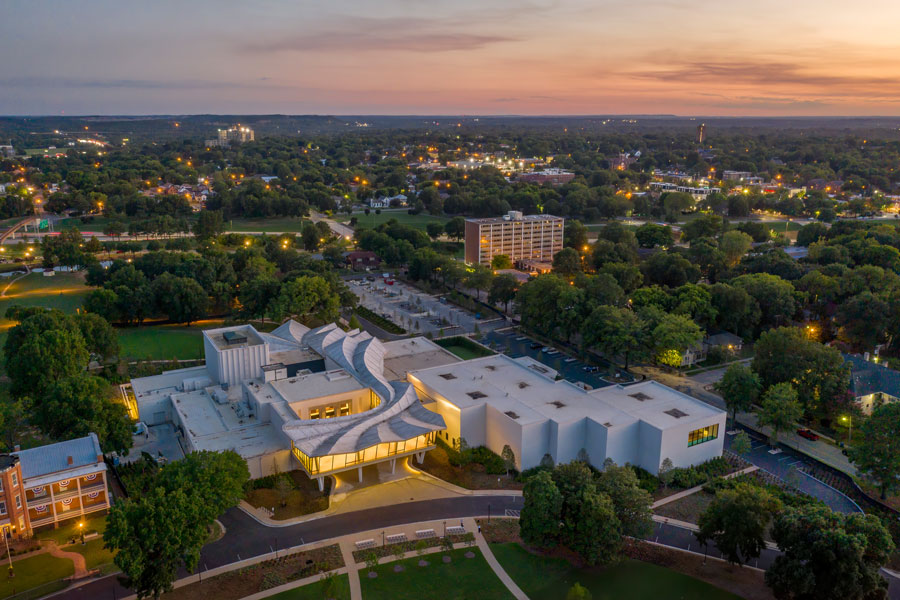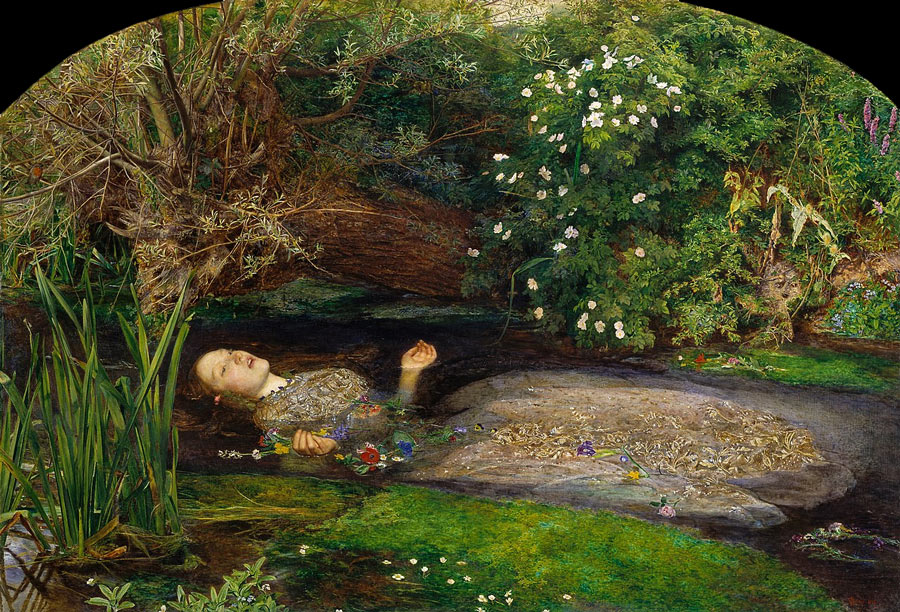A sudden pessimism · New York Art Auctions, May 2023
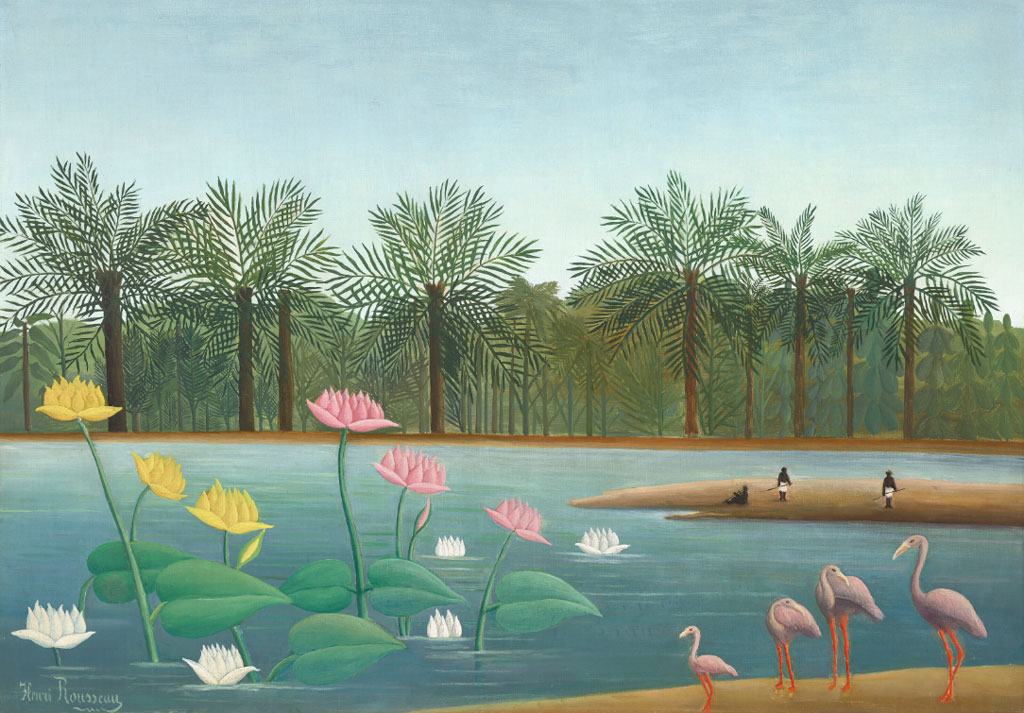
A look at the highlights of Christie’s and Sotheby’s art auctions in New York, May 2023.
By G. Fernández · theartwolf.com · Image: Henri Rousseau, “Les Flamants” (1910) · Pre-sale texts written on 1 and 2 May 2023. Completed on 19 March 2023 after auction results.
There is no doubt that May and November are the most important months in the world of art auctions. For many decades now, Christie’s and Sotheby’s have reserved for their New York May & November auctions their most important lots, the “blockbusters” destined to break records and grab headlines. And in recent years, this “tradition” has produced some memorable moments.
November 2022 will be remembered, of course, for the historic sale of the Paul Allen Collection at Christie’s, with its $1.5 billion in sales (including several works that exceeded $100 million each), and to a lesser extent for the $85 million achieved by one Warhol at Sotheby’s. In May 2022 we had the $195 million Marilyn, and – though perhaps not everyone considers it “art” – Sotheby’s breaking records with the sale of a Mercedes 300 SLR Uhlenhaut Coupé for €135 million, plus Phillips joining the party with an $85 million Basquiat. This historic 2022 came after a November 2021 in which Sotheby’s achieved 676 million with the auction of the Macklowe collection (including an $82.5 million Rothko), and already in May 2021 Christie’s broke (again) the $100 million barrier with the sale of one of the multiple Marie-Thérèses by Picasso.
And suddenly, the first of the great art auction sessions of 2023 arrives without any “superstars”, without a single work with a pre-sale estimate of more than $50 million. It may be prudent to wait for the results of the auctions before speaking of a “crisis” or a “change of trend”, but in any case it seems a worrying sign for the art market. Be that as it may, the auctions include a good number of works that deserve to be commented on. Let’s take a look.
The Picasso Paradox
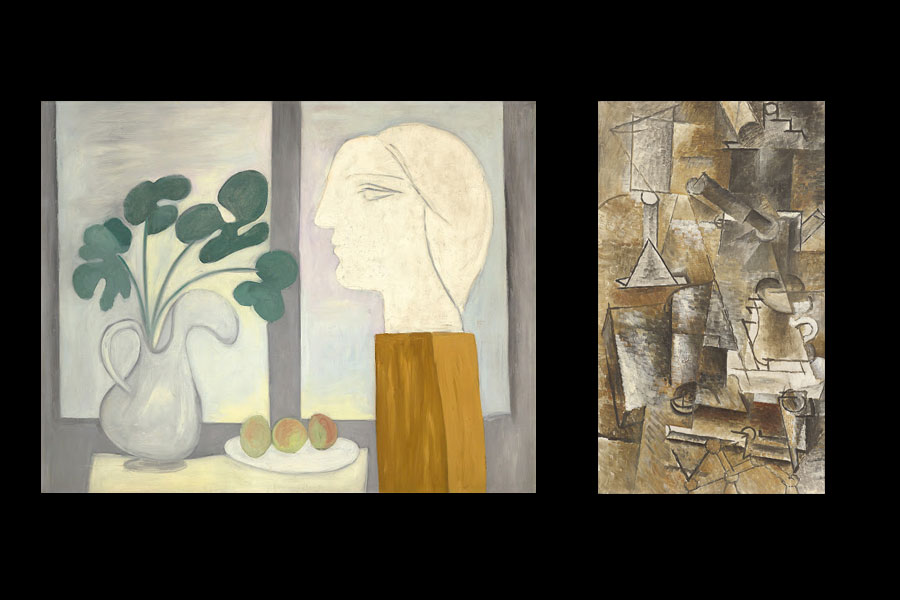
Apart from a monumental Basquiat, which will be discussed later, the closest thing to a “superstar” that Christie’s offers at its auctions is “Nature morte à la fenêtre“, one of the many works painted by Pablo Picasso in 1932 featuring a sculpted bust depicting his lover Marie-Thérèse Walter. Christie’s goes to great lengths to relate this work, of considerable size, to other celebrated paintings of 1932 that also include such a bust, such as the famous “Nu au Plateau de Sculpteur” (Nude, Green Leaves and Bust) auctioned in 2010 for over $100 million, going so far as to say in the catalogue that “‘Nature morte à la fenêtre’ holds a pivotal place within the story of Picasso’s annus mirabilis“, a rather debatable statement. In any case, it is still a 1932 Picasso, which makes it an attractive work for the art market, so it should have no problem reaching its (unofficial) estimate in the region of $40 million. “Nature morte à la fenêtre” was auctioned for $41.8 million. A somewhat grey result, neither good nor bad… In line, therefore, with the quality of the work.
In addition to “Nature morte à la fenêtre“, three other Picassos share the same pre-sale estimate (between $20 million and $30 million). At Christie’s, both “Femme assise au chapeau de paille (Marie-Thérèse)” (1938) and “L’Arlésienne (Lee Miller)” (1937) show Picasso’s characteristic style of the late 1930s, while at Sotheby’s, the huge “Femme nue couchée jouant avec un chat” (1964) serves as a reminder to me why I hate virtually all Picassos painted after World War II. “Femme assise au chapeau de paille (Marie-Thérèse)” failed to sell. “L’Arlésienne (Lee Miller) was sold for $24.6 million. “Femme nue couchée jouant avec un chat” fetched $21.2 million.
With a much lower pre-sale estimate comes what is in my opinion the best of all the Picassos coming up for auction this May: painted in 1911, “Cafetière, tasse et pipe” is a small (46 x 27 cm) but very good example of Picasso’s Analytical Cubism, and therefore a highly valuable testimony to one of the most transformative and relevant moments in the history of Western art. Coming from the important collection of S.I. Newhouse, the work has a pre-sale estimate of between $8 million and $12 million, which should be far exceeded if modern art collecting was more about the importance of a work and less about “trendiness”. This does not seem to be the case, considering that last November, “Buffalo Bill” – another 1911 Picasso slightly larger than this one – sold for $12.4 million against a pre-sale estimate of $10-15 million. And so it was: “Cafetière, tasse et pipe” was sold for only $11.3 million. My sincere congratulations to the buyer.
Contemporary Epics: Basquiat, Ruscha, de Kooning
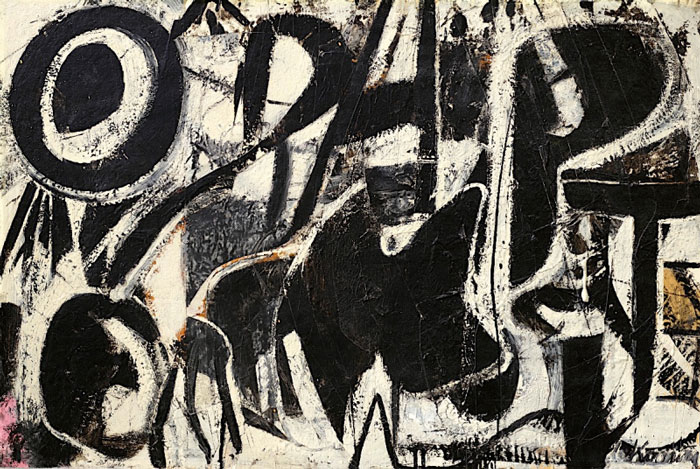
Along with “Nature morte à la fenêtre“, the star of Christie’s auctions is Jean-Michel Basquiat’s “The Great Spectacle (The Nile)“, a 1983 painting with an (unofficial) estimate in the region of $45 million. It is a monumental painting -reminiscent in complexity and format of “Undiscovered Genius of the Mississippi Delta“, also from 1983 and auctioned in 2014 for $23.7 million- though less expressive than some of his most celebrated works from 1981 and 1982 (Basquiat’s true “magic year”). Coming from the collection of Peter Brant, Sotheby’s is auctioning “Now’s the Time“, one of the strangest Basquiats I’ve seen on the market in a long time, with an estimate (also unofficial) in the region of $30 million. “The Nile” fetched $67.1 million, an excellent result for Basquiat, whose works seemed (or appear) to have lost some market appeal in the last two years. “Now’s the Time” was sold for $28.6 million.
The big star of the group of works from the S.I. Newhouse collection that Christie’s is putting up for auction is “Orestes“, painted in 1947 by Willem de Kooning. Despite its almost monochromatic palette, it is a very interesting work, an energetic abstraction painted during the most important period of the artist’s career (from the end of World War II to the late 1950s). Although its pre-sale estimate has not been made public, some sources speak of a figure “in excess of $25 million“, which seems relatively conservative considering that this painting was sold for more than $12 million in 2002, long before the post-war art boom that began around 2006. “Orestes” was auctioned for $30.9 million, a result that – while not bad – does seem somewhat low in comparison to other lesser De Koonings that have fetched very notable prices in recent times.
Ed Ruscha‘s “Gas Stations” are undoubtedly the artist’s most famous works, and one of the icons of American Pop Art. At the risk of being wrong, I would say that “Burning Gas Station” (1966-69) is the first painting in the series to come up for auction since another “Burning Gas Station” was auctioned for almost $7 million in 2007, then a record for the artist. On this occasion, this painting carries a pre-sale estimate of between $20 million and $30 million, which would fall short of Ruscha’s current record price, set in 2019 by “Hurting the Word Radio #2“, sold at Christie’s for $52.5 million. “Burning Gas Station” fetched $22.3 million, a result that I personally find somewhat disappointing for an undeniably iconic work.
The modern landscape: Klimt, Monet, Cézanne, Van Gogh…
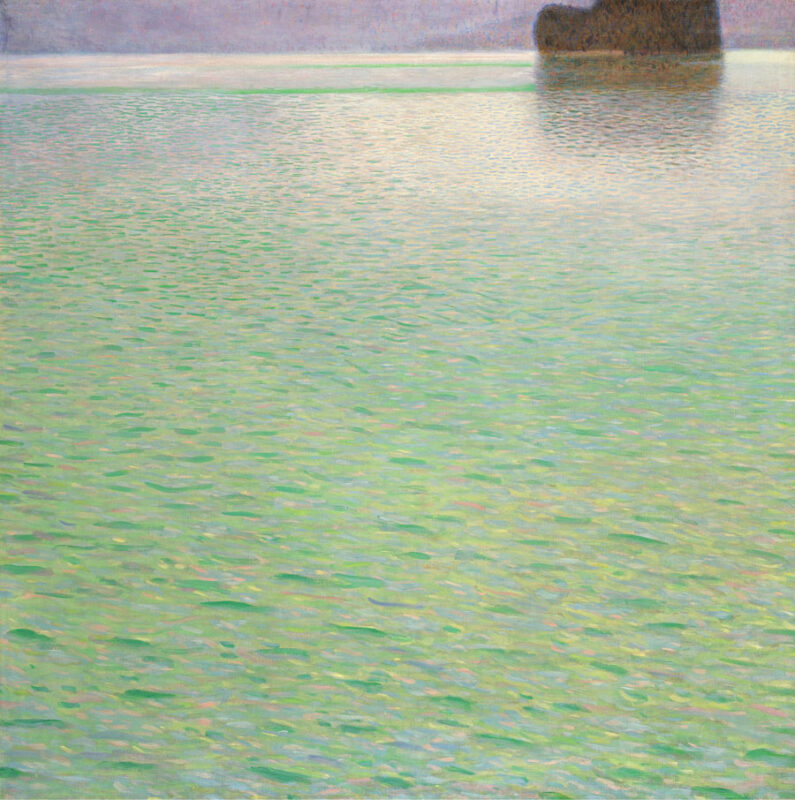
As we have seen, the category of “good but not great” can be applied to several works in this series of auctions, and another good example of this is Gustav Klimt’s “Insel im Attersee” (Island in Attersee). Painted around 1901-02, it is a fine Klimt, painted in the 100 x 100 cm format typical of many of the artist’s landscapes, but it lacks that “magic frozen in time” exhibited by his most accomplished landscapes, such as the recent “hundred-million dollar forest” from the Paul Allen collection, or -to find a more similar example- the “Litzlberg am Attersee” that Sotheby’s auctioned just over a decade ago for just over $40 million. Although the estimate for the painting is not public, several sources put it in the region of $45 million. This Klimt was sold for $53.2 million, a good result.
Sotheby’s also includes a pair of Mediterranean views painted by Claude Monet in 1884, “Au Cap Martin” (pre-sale estimate of $10-15 million) and “Palmier à Bordighera” ($5-7 million). Although I am a self-confessed Monetmaniac, I must say that neither of these two paintings really catches my eye, being in my opinion rather inferior to other Mediterranean views by Monet auctioned in recent years, such as the “Antibes vue de la Salis” auctioned in 2021 for $13.4 million, or the excellent “Antibes, vue du plateau Notre-Dame” sold for a similar price in 2014. As expected, none of the Monets achieved a good result. “Au Cap Martin” fetched $11.5 million, and “Palmier à Bordighera” sold for $5.85 million.
Sotheby’s also includes a pair of Cézannes which, far from being masterpieces, are interesting examples of the stylistic evolution of their author, one of the fathers of modern art. Painted in 1879, “Maison dans les arbres” already shows Cézanne’s interest in complex compositions, being a work in which we can already glimpse the proto-Cubism that the painter would develop over the following two decades. Its modest pre-sale estimate (between $3 million and $5 million) makes it one of the potential bargains of the auction. With a slightly higher estimate (between $4 million and $6 million) is “La Montagne Sainte-Victoire vue des Lauves” (1902-06), a very good watercolour from the artist’s last period. “Maison dans les arbres” failed to find a buyer! What a good opportunity for dealers and gallery owners to find a “post-auction bargain”. “La Montagne Sainte-Victoire vue des Lauves” was sold for $4.9 million.
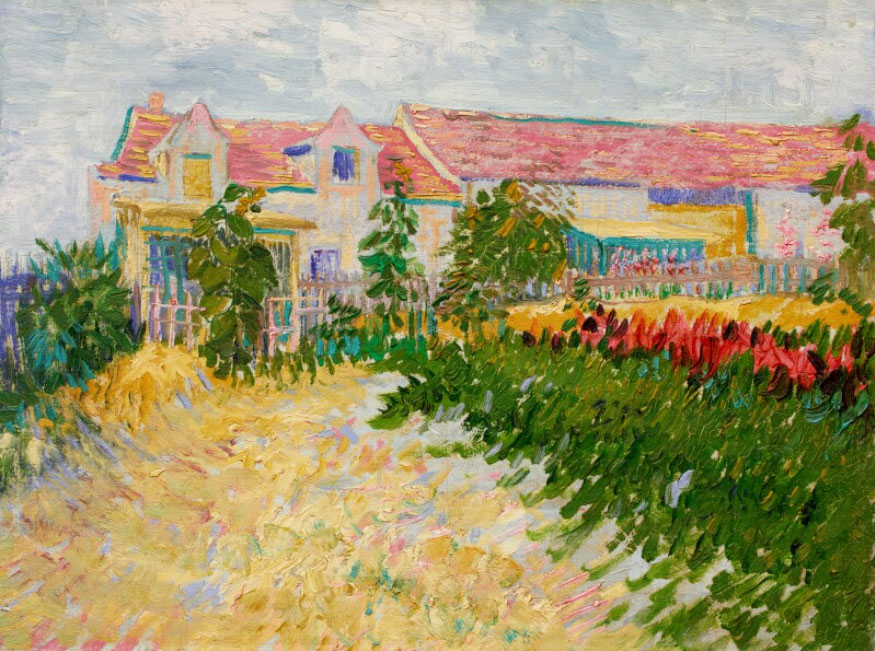
One of the last works to be announced by Sotheby’s was “Jardin devant le Mas Debray“, a small (30.8 x 41 cm) landscape painted by Vincent van Gogh during his Parisian period, in the summer of 1887. It is a somewhat unusual work, which in most of the artist’s catalogues is considered to have been painted in Auvers, in the last months of the artist’s life. In this regard, Sotheby’s catalogue for the work states that “the present work contains so many aspects of Van Gogh at his apex—his 1890 works in Auvers—that traditionally the work was thought to belong to the Auvers period. It was only in the early 1990s following a close analysis of the geography and other aspects of Jardin devant le Mas Debray, that this work was re-dated to his Paris period.” “Jardin devant le Mas Debray” comes up for auction with a pre-sale estimate of $20-30 million. Although Van Gogh does not usually disappoint at auction, the estimate could be considered somewhat ambitious considering the results of other Van Goghs from this same period. Two years ago, Sotheby’s auctioned in Paris a “Scène de rue à Montmartre“, somewhat larger than the present work, for around 13 million euros. And at the end of 2018, “Coin de jardin avec papillons” – a far superior work to the one now on auction at Sotheby’s – was one of the very few disappointments in the market for Vincent van Gogh’s works, going on auction with a pre-sale estimate of around $40 million, and failing to find a buyer. Indeed, “Jardin devant le Mas Debray” made only $23.3 million, an unsatisfactory result for an unsatisfactory Van Gogh.
…and the imagined landscape: Rousseau and Magritte

Rousseau, Rousseau at last. Henri Rousseau, “Le Douanier Rousseau“, perhaps the rarest of all Post-Impressionist artists, is also an exception in the art market, as there is virtually no case of a major work by him appearing at auction in recent times. In 2004, Tajan brought an interesting “Paysage exotique avec lion et lionne d’Afrique” to auction in Paris, which went rather unnoticed on the art market (perhaps because it was offered outside the two major auction houses, Christie’s and Sotheby’s), but which in my opinion is a fascinating work, albeit of rather modest size. Now, Christie’s is auctioning “Les Flamants” (1910), one of his “tropical” works, with a pre-sale estimate of between $20 million and 30 million, of course the highest ever assigned to a work by the artist. Although I personally do not consider it one of the artist’s best paintings, it is undoubtedly an important, attractive work of considerable size (113.8 x 162 cm.), painted in the same year as “The Dream” –Rousseau’s greatest masterpiece- and “The Tropics (Monkeys in the Orange Grove)“, an extraordinary painting that forms part of the list of the 200 most valuable paintings in private hands. “Les Flamants” fetched $43.5 million, a well-deserved success.
Unlike Rousseau, René Magritte has been very prominent on the art market in recent years. Coming from the collection of Mo Ostin, Sotheby’s is auctioning two important paintings by the great Belgian surrealist. The most valuable of these is “L’Empire des lumières” (1951), an example of possibly the most celebrated of Magritte’s images, along with “Le fils de l’homme” and “La trahison des images“. Last year, the largest of all the versions was sold at Sotheby’s for £59.4 million ($79.5 million), a new record for a work by Magritte, and then the second highest price ever paid for a painting at auction in Europe. The present version comes to auction with a pre-sale estimate of between $35 million and $55 million, and fetched $42,3 million. In addition, the Mo Ostin collection also includes “Le Domaine d’Arnheim“, which comes to auction with a pre-sale estimate of between $15 million and $25 million, and was sold for just under $19 million.. Another version of the same subject, somewhat simpler in composition, was auctioned six years ago at Christie’s for £10.2 million.
Sculpture: Louise Bourgeois y Giacometti
Louise Bourgeois‘s “Spiders” are among the most iconic sculptures of post-World War II European art, instantly recognisable icons and highly prized by the art market, which applies the rule of “the bigger the better” to them. Coming from the Fundação Itaú, which acquired it from the artist the same year the work was created (1996), the “Spider” that Sotheby’s is auctioning measures an impressive 337.8 x 668 x 632. 5 cm, and comes to auction with a pre-sale estimate of between $30 million and $40 million, which gives it a good chance of breaking the artist’s current record price, some $32 million achieved by Christie’s in 2019 with the sale of another “Spider” from 1997-1997, slightly larger than the one Sotheby’s is offering now. In 2011, another “Spider” from the same series from 1996, identical in size to the one now on auction, sold for $10.7 million. This “Spider” reached $32.8 million, breaking the record price for the artist if we do not take inflation into account.
Also at Sotheby’s, “Femme Leoni” is one of Alberto Giacometti‘s “hieratic” sculptures, very much in the style of his “Grande Femme Debout” and far removed from the dynamism of works such as “L’Homme qui marche“. Conceived in 1947 and cast in 1960, the work is the 6/6th edition of his series, and curiously the 5/6th edition was auctioned 18 years ago at Christie’s for $8.4 million. On this occasion, Sotheby’s has given it a pre-sale estimate of $25-35 million, more in line with the $25.9 million that another “Femme Leoni” (cast in 1958) fetched at Sotheby’s in late 2020. “Femme Leoni“ was sold for $28.5 million.
The “modern” Rubens and the Old Masters
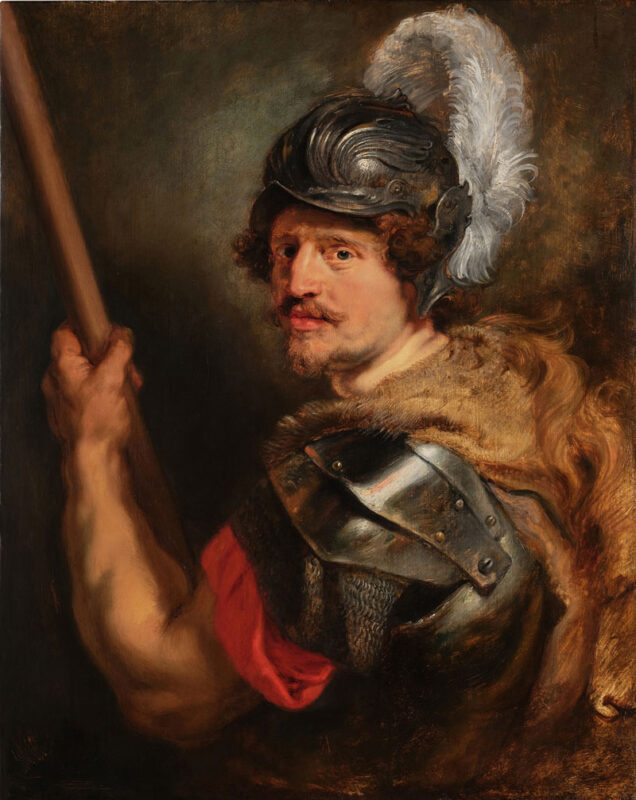
Sotheby’s modern art auction includes Peter Paul Rubens’s “Portrait of a Man as the God Mars“ (c.1620), in a move debatable from a scholarly point of view but understandable from a commercial point of view (just remember what happened when the “Salvator Mundi” attributed to Leonardo was included at the Christie’s modern art auction in November 2017). Focusing on the painting, it is a magnificent portrait by Rubens, which returns to auction after having been auctioned for $8.25 million in 2000, and for $6.8 million in 2002, then continuing a striking loss of value, as -according to a report by Carol Vogel in The New York Times- the painting had previously been sold privately for more than $13 million in the late 1980s. Now, this excellent painting is coming up for auction with a pre-sale estimate of between $20 million and $30 million, which it should easily reach (or exceed), considering the quality of the work and the recent case of “Salome with the Head of St. John the Baptist“, a painting by the same artist which, having been auctioned for $5.5 million in 1998, was sold in January this year for $26.9 million. Although I thought I knew this painting quite well, for some reason I had forgotten its very interesting provenance, which includes having passed through the collections of Count Alessandro Contini Bonacossi and the American collector Samuel H. Kress, although for some reason it did not form part of the extraordinary group of works the latter bequeathed to several American museums, especially the National Gallery in Washington. This excellent Rubens was sold for $26.2 million, a result curiously similar to that of the recently auctioned “Salome with the Head of Saint John the Baptist“.
In addition to this Rubens “intruder” in modern art auctions, Christie’s is organising two auctions of Old Masters paintings which include some interesting works with very modest pre-sale estimates. Of particular note is the second part of the auction of the J.E. Safra collection, which is labelled “selling without reserve”, guaranteeing the possibility of bargains for astute collectors. “An extensive landscape with travelers before a windmill” is a beautiful oil on copper by Jan Brueghel II (1601-1678), a little gem with a very modern colour palette that comes to auction with a pre-sale estimate of between $100,000 and $150,000. For lovers of romanticism, “E ancor non torna” (And She Never Returned) is a beautiful work by Alfonso Simonetti (1840-1892) which comes up for auction with a pre-sale estimate of between $20,000 and $30,000.
An appreciated reader (thank you, MF Anders!) has brought to my attention the excellent “Portrait of a gentleman, half-length” by Nicolas de Largillière (1656-1746), one of the leading French portraitists of the first half of the 18th century. It is a remarkable work in many ways, from the somewhat melancholic expression of the sitter to the richness shown in his clothing and in the background of the composition. Just over a year ago, a portrait by the same artist possibly depicting the Marquise de Parabère exceeded $1 million at Sotheby’s New York, while in 2020 the second version of the famous “La Belle Strasbourgeoise” fetched over €1.5 million in Paris. On this occasion, this portrait of a gentleman comes to auction with a pre-sale estimate of between $40,000 and $60,000.
Follow us on:

